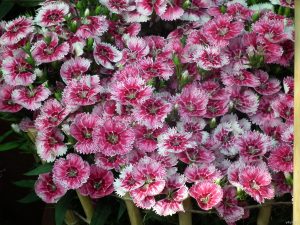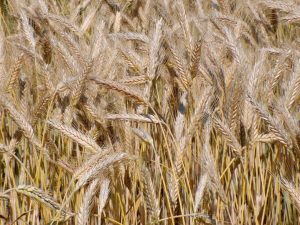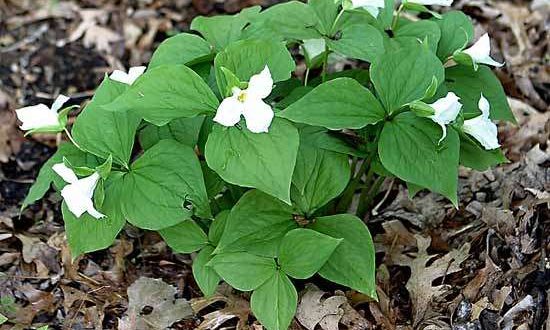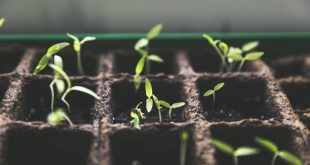“Healthy citizens are the greatest asset any country can have.”
Said late British prime minister Sir Winston Leonard Spencer Churchill. For maintaining good health, we require food. Thus, food ranks first among the basic necessity of life. Although food being produced to feed every individuals among all over the world. Yet the demand of food is increasing day by day.
What could be the reason for increasing the demand of food?
Everybody is aware about the increasing of global population. As a result of which most of the agricultural lands are being exploited for dwelling and commercial purposes thereby, increasing the cultivational prospects which in turn affects the food production. Production of good quality seeds is yet another big challenge.
What could be done to control the chronic food shortage that troubles the entire world?
There are only two possible ways:
- To decrease the population which is extremely impossible.
- To improve and increase food production through the available technological advancements.
For example producing high quality seeds that are superior to the parent.This is possible by inducing the desirable characteristics into an existing variety so as to overcome it’s defects or weaknesses.Technically this process is known as hybridization.
In this article, Hybridization will be discussed in detail. Here is the part 1 of the topic.
Best safe and secure cloud storage with password protection
Get Envato Elements, Prime Video, Hotstar and Netflix For Free
Best Money Earning Website 100$ Day
#1 Top ranking article submission website
Definition
Hybridization is an important method of combining characters of different plants. Hybridization does not change genetic contents of organisms but it produces new combination of genes. Hybridization may be defined as follows:
Biological Definition
As a result of cross between two genetically different parents, individual produced is known as hybrid and the natural or artificial process that results in the formation of hybrid is known as hybridization.
Taxonomical Definition
The production of a hybrid by crossing two individuals of unlike genetical constitutions and the individuals may be within same variety/ species/ genus or between different varieties/species/genera is known as hybridization.
Genetical Definition
Genetic hybridization is the process of interbreeding individuals from genetically distinct populations to produce a hybrid. A genetic hybrid would therefore carry two different alleles of the same gene.
History of Hybridization
The phenomenon of hybridization has fascinated scientists for many decades and in various biological context. Despite the long history of hybridization research, many open questions remain, some of which can only now be tackled due to the rapid improvement of sequencing technology. Here some significant history are mentioned below:
- In 1717, Thomas Fairchild, an English Gardener was the first man to do distant hybridization. He produced an intrageneric artificial hybrid defined as Dianthus Caryophyllus barbatus (Fairchild’s Mule) by crossing between two species of Dianthus.
Dianthus caryophyllus (Carnation) x Dianthus barbatus (Sweet william).

- In 1760-1766, Joseph Gottlieb Kolreuter, a German Botanist was the pioneer of the study of hybridization as he contributed in these following sections:
- First reported self-incompatibility in Verascum phoeniceum.
- Observed heterosis that hybrids surpassed their parents.
- Produced interspecific hybrids specially the Tobacco plant(Nicotiana rustica and Nicotiana paniculata).
- First detected male sterility in Nicotiana.
- Found reciprocal crossing produced identical results.
- In 1759-1835,Thomas Andew Knight, a British Botanist developed several varieties of apples, pears, peaches, grapes and currants.
-
In 1866,Gregor Johann Mendel, published his discoveries in ‘Experiments in plant hybridization’ cumulating in the formulation of laws of inheritance in the Garden Pea.
- In 1873,Patrick Shireff, published that only the variation heritable nature responded to selections and that there variation arose through natural mutation and natural hybridization.
- In 1890,Rimpu, a Swedish Scientist first made inheritance cross and produced an intergeneric hybrid called Triticale(Triticosecale sp.). It was an amphidiploid species by cross between two different genera.
Triticum sp. (Wheat) x Secale sp. (Rye).

- In 1909,Nilsson Ehle, gave the explanation of multiple factor hypothesis for Grain colour of Wheat by using pedigree and bulk method.
- In 1914,George Harrison Shull, first used the term heterosis for hybrid vigour.
- In 1917,Jones, developed first commercial hybrid Maize and proposed dominance of linked gene hypothesis.
-
In 1928, Karpechenko, a Russian Scientist produced an intergeneric amphidiploid hybrid named Raphano brassica by cossing between two different genera.
Raphanus sativus (Radish) x Brassica oleraceae (Cabbage).

Raphano brassica. Image Source Here. Objectives of Hybridization
The chief objective of hybridization is to create variation. When two genotypically different plants are crossed, the genes from both the parents are brought together in F1. Segregation and recombination produce many new gene combinations in F2 and subsequent generations.
The degree of variation produced depends on the number of heterozygous genes in F1. The number of heterozygous genes in F1 in turn depends on number of genes for which the two parents differ. If the parents are not related they may differ for several genes.
The aim of hybridization may be as follows:
- The transfer of one or few qualitative characters.
- The improvement in one or more quantitative characters.
- The use of F1 as a hybrid variety.
These objectives are briefly discussed below:
Combination Breeding
Definition: The process of transferring desirable genetic characteristics from one or more varieties into a single plant is defined as combination breeding.
The main aim of combination breeding is the transfer of one or more characters into a single variety from other varieties. These characters may be governed by oligogenes or polygenes.In this approach, increase in yield is obtained by correcting the weaknesses in the yield contributing traits like tiller number, grains per panicle, seed weight of the concerned variety.
Example: Disease resistance achieved by backcross breeding.Pedigree method is also another example.
Transgressive Breeding
Definition: The production of plants in F2 generation that are superior to both the parents for one or more characters is known as transgressive breeding.
In such plants are produced by the accumulation of favourable genes from both the parents as a consequence of recombination. In this case the parents involved in hybridization must combine well with each other and preferably be genetically diverse. This way, each parent expected to contribute different plus genes which when brought together by recombination gives rise to transgresive segregation.
Example: The pedigree method as well as population approach are designed to produce transgresive segregants.
Hybrid Varieties
Definition: F1 is more vigorous and higher yielding than parents in most self-pollinated crops. Wherever it is commercially feasible, F1 may be used directly as variety; such a variety is called hybrid variety.
In such case,it is important that the two parents should combine well to produce an outstanding F1.
Example: Hybrid varieties are being cultivated on a commercial scale in rice and some other self-pollinated crops.
Types of Hybridization
Based on the taxonomic relationships of the involved parents hybridization can be categorized into two different types. They are:
1.Closely Related Hybridization
The process of hybridization by which a hybrid is produced by crossing between same species among the same or different varieties.
These type of hybridization can be again classified into:
- Intravarietal Hybridization
Definition: The process through which two parents of same variety are crossed together to produce a new variety called intravarietal hybridization.
Example: Any same variety plants can be taken.
- Intervarietal or Intraspecific Hybridization
Definition: The process through which two parents of different varieties are crossed together to produce a new variety called intervarietal or intraspecific hybridization.
Example: Romanesco broccoli
Brassica oleraceae var. botrytis (Caulliflower) x Brassica oleraceae var. italica (Brocoli).
2.Distantly Related Hybridization or Wide Hybridization
The process of hybridization by which a hybrid is produced by crossing between different species among the same or different genera.
These type of hybridization can be again classified into:
- Intrageneric or Interspecific Hybridization
Definition: The process of hybridization by which a hybrid is produced by crossing between different species among the same genus.
Example: Hibiscus syriacus (Melwhite) x Hibiscus sinosyriacus (Lilac queen).
- Intergeneric Hybridization
Definition: The process of hybridization by which a hybrid is produced by crossing between different species among the different genera.
Example: Raphano brassica
Raphanus sativus (Radish) x Brassica oleraceae (Cabbage).
References & Other Links
- George Acquaah 2012. Principle of Plant Genetics and Breeding. Bowie State University, Maryland, USA.
- B. D. Singh 2005. Plant Breeding Principles and Methods. Kalyani Publishers,New Delhi.
- Development of e-Courses for b.Sc.(Agricultue) Degree Programme. Principles of Plant Breeding. This e-Course Develped by TANU (ICAR).
- Wikipedia
- Biology Discussion
- Featured Image Source Here.
Written by
Fariha Tandra, B.S. (Hons), Department of Botany, University of Dhaka
Revised by
- Saifun Nahar Smriti on 29 August, 2020.
 Plantlet The Blogging Platform of Department of Botany, University of Dhaka
Plantlet The Blogging Platform of Department of Botany, University of Dhaka





Informative indeed.
I have read your article carefully and I agree with you very much. This has provided a great help for my thesis writing, and I will seriously improve it. However, I don’t know much about a certain place. Can you help me?